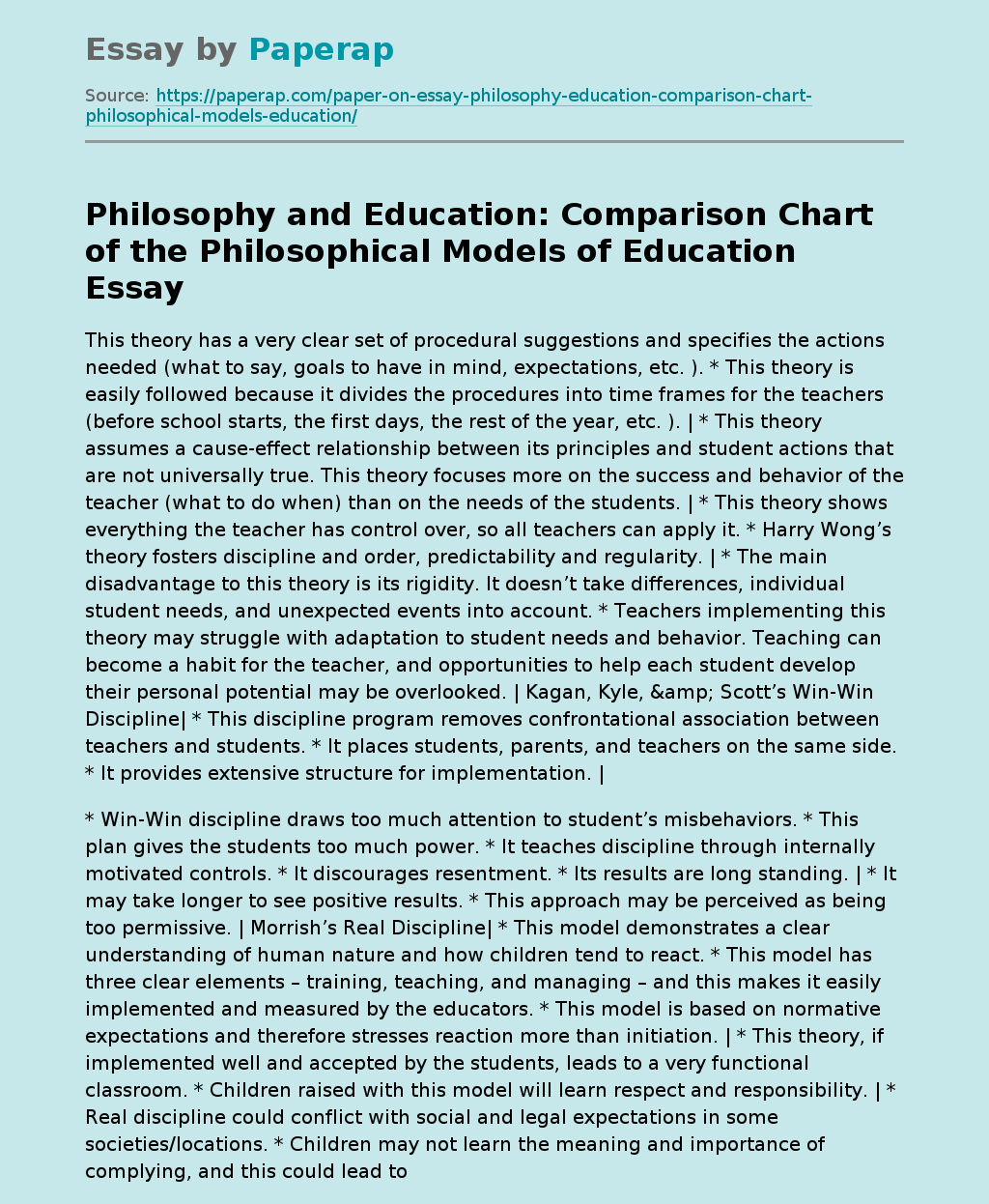This theory has a very clear set of procedural suggestions and specifies the actions needed (what to say, goals to have in mind, expectations, This theory is easily followed because it divides the procedures into time frames for the teachers (before school starts, the first days, the rest of the year, etc. This theory assumes a cause-effect relationship between its principles and student actions that are not universally true. This theory focuses more on the success and behavior of the teacher (what to do when) than on the needs of the students.
| This theory shows everything the teacher has control over, so all teachers can apply it.
Harry Wong’s theory fosters discipline and order, predictability and regularity. The main disadvantage to this theory is its rigidity. It doesn’t take differences, individual student needs, and unexpected events into account. Teachers implementing this theory may struggle with adaptation to student needs and behavior. Teaching can become a habit for the teacher, and opportunities to help each student develop their personal potential may be overlooked.
Kagan, Kyle, & Scott’s Win-Win Discipline This discipline program removes confrontational association between teachers and students. It places students, parents, and teachers on the same side. It provides extensive structure for implementation.
Win-Win discipline draws too much attention to student’s misbehaviors. This plan gives the students too much power. It teaches discipline through internally motivated controls. It discourages resentment. Its results are long standing. It may take longer to see positive results. This approach may be perceived as being too permissive.
Morrish’s Real Discipline This model demonstrates a clear understanding of human nature and how children tend to react. This model has three clear elements – training, teaching, and managing – and this makes it easily implemented and measured by the educators. This model is based on normative expectations and therefore stresses reaction more than initiation. This theory, if implemented well and accepted by the students, leads to a very functional classroom.
Children raised with this model will learn respect and responsibility. Real discipline could conflict with social and legal expectations in some societies locations. Children may not learn the meaning and importance of complying, and this could lead to future rebellion. Children might not have the room and freedom to develop their unique nesses and creativity| Comparison and Contrast. The Morrish and Wong discipline models are similar to the level that they both highlight teaching children proper behavior using expected methods. One of the main differences between Real Discipline and Pragmatic Classroom is that Wong focuses more heavily on classroom application and actions (not all of which are a response to bad behavior; some just set the expectations), while Morrish focuses more specifically on methods of discipline.
Morrish, however, includes more elements taking into account the reaction and needs of the child than Wong, who focuses more on an ideal classroom setting. The Win-Win model of discipline is the most positive of the three, as it leaves more room for the personal growth and positive uniqueness of each student. Rather than focusing on meeting certain norms or expectations, the win-win method focuses on helping each student reach their maximum potential and replace any negative attitudes or tendencies with positive ones. . Personal analysis: a. For average and above-average students, the win-win discipline model is the most helpful and manageable. b. For students with learning difficulties or behavioral difficulties, Wong’s pragmatic classroom and Morrish’s real discipline models may be more effective, as these students will be incapable or unwilling to respond to the win-win methods. Due to behavioral difficulties, it is essential for them to learn optimal behavior so they can function typically in the classroom. |
Philosophy vs Education Models Chart. (2019, Jun 20). Retrieved from https://paperap.com/paper-on-essay-philosophy-education-comparison-chart-philosophical-models-education/

